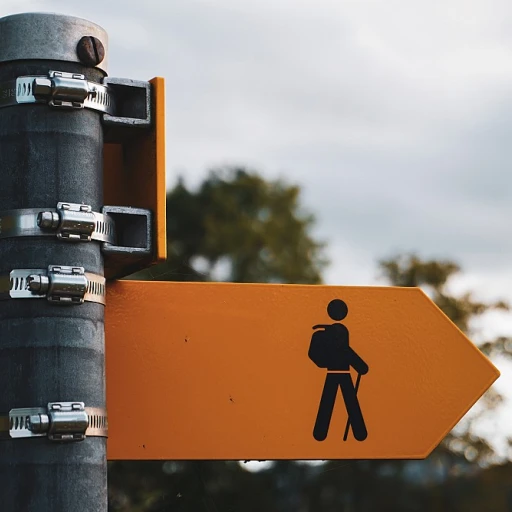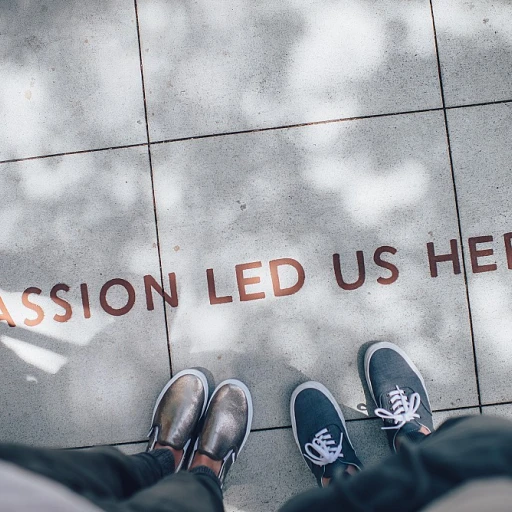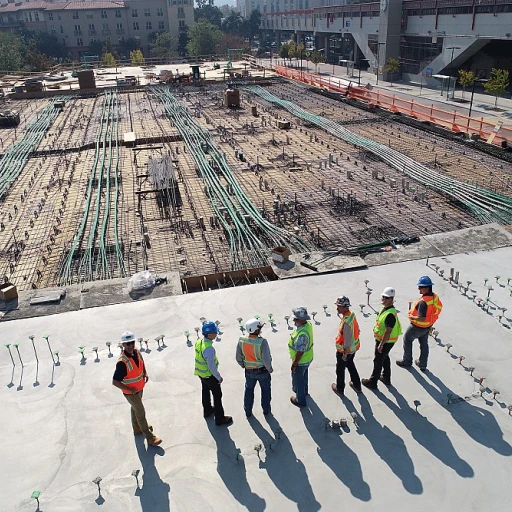
Understanding the Scope of Global II History
Exploring the Breadth of Global II History
Global II History courses offer a comprehensive exploration of the world's past, focusing on the interconnectedness of societies and the evolution of global trade networks. These courses are designed to provide students with a deep understanding of history and geography, emphasizing the significance of enduring issues that have shaped our world. Students will examine various units that cover significant historical periods and events, from the Age of Exploration to the modern era.
In these classes, students engage with a wide range of materials, including primary sources, scholarly articles, and multimedia content. This diverse array of resources helps to create a dynamic learning environment where students can preview and review key concepts effectively. The curriculum is structured to prepare students for the regents exam, which assesses their knowledge and understanding of global history and geography.
As part of the course, students will also delve into the social studies aspects of history, analyzing how social, political, and economic factors have influenced historical events. This holistic approach ensures that students gain a well-rounded perspective on global history, equipping them with the skills needed to tackle complex issues essays and constructed responses.
For those looking to enhance their understanding of the subject, engaging with continuous learning resources can be invaluable. By exploring the Global Management Challenge Model for Continuous Learning, students and educators alike can discover innovative strategies to deepen their historical knowledge and foster a lifelong passion for learning.
The Role of Continuous Learning in History Education
The Importance of Lifelong Learning in History Education
In the realm of Global II History courses, continuous learning plays a pivotal role in shaping a comprehensive understanding of historical events and their implications. As students navigate through the complexities of global history, the need for ongoing education becomes evident. This approach not only enhances their grasp of historical content but also prepares them for the challenges of the regents exam and beyond.
Continuous learning in history education is crucial for several reasons:
- Adapting to New Information: History is not static. New discoveries and interpretations constantly emerge, requiring students to stay updated with the latest materials and resources. This dynamic nature of history ensures that students will always have something new to learn and explore.
- Enhancing Critical Thinking: Engaging with history through continuous learning encourages students to critically examine enduring issues and trade networks. This process helps them develop the skills needed to analyze and construct responses to complex historical questions.
- Preparing for Exams: Regular review and regents prep are essential for success in history regents exams. Continuous learning provides students with the opportunity to preview and review content, ensuring they are well-prepared for the geography regents and other assessments.
- Fostering a Global Perspective: By continuously engaging with global history and geography, students gain a broader understanding of social studies and the interconnectedness of historical events. This global perspective is invaluable in today's interconnected world.
Incorporating continuous learning into Global II History courses not only enriches the educational experience but also equips students with the tools they need to succeed in their academic and professional endeavors. As they explore the enduring issues and social dynamics of the past, students will find that their journey through history is a lifelong adventure.
Challenges in Global II History Courses
Addressing Key Challenges in Global II History Education
Global II History courses present unique challenges that students and educators must navigate to achieve success. As students delve into intricate topics such as trade networks and enduring issues, they often encounter difficulties that require innovative approaches and resources. One significant challenge stems from the vast scope of the content, which includes global trade and the interaction of various social systems. The sheer volume of information can be overwhelming for students preparing for exams like the New York State Regents. They must not only understand historical events but also connect these to broader themes. This necessitates a robust strategy for regents prep, constructing a response that effectively addresses the unit's enduring issues. Another hurdle is the interdisciplinary nature of history geography, which demands that students will also engage with questions beyond simple memorization. Understanding geographic influences on historical events is crucial for the geography regents exam. It requires students to engage critically with materials and construct thoughtful responses. Comparatively, resources such as regents review materials and platforms like Google Classroom can provide essential support. They offer review and preview opportunities that prepare students for the regents exam by allowing them to interact with the course content in diverse ways. Educators are increasingly turning to innovative teaching methods to combat these challenges. Interactive social studies classes and exams escape rooms are just some examples where students will examine different enduring issues in an engaging way. This pedagogical shift opens a window for continuous learning approaches that can significantly enhance the educational experience. In summary, Global II History courses pose challenges that require a multifaceted approach. For further insights into how continuous learning fuels innovation, click share on this resource fueling innovation through continuous learning.Innovative Teaching Methods for Global II History
Innovative Approaches to Teaching Global II History
In an era where education is rapidly evolving, the incorporation of innovative teaching methods in Global II History courses has become essential. These approaches aim to enhance student engagement, promote deeper understanding, and ensure students are well-prepared for the challenges of the regents exam and beyond.Utilizing digital tools and platforms in history education opens up a world of interactive and immersive learning possibilities. For instance, platforms like Google Classroom have become staples in the modern educational landscape, offering resources and preview materials to complement traditional teaching methods. Students can engage in a regents review, interact with historical maps or participate in virtual reality simulations of historical events, experiences that enrich their understanding of history geography concepts. These tools not only facilitate learning but also allow for a seamless transition into remote or hybrid learning setups.
Innovative teaching methods also involve a more student-centered approach, where the focus shifts from rote memorization to critical analysis and synthesized knowledge. Teachers often incorporate activities such as constructed response questions and enduring issue essays to encourage students to think critically about historical events and their long-term impacts. By engaging in these exercises, students will develop a more nuanced perspective on the complex interplay of social, political, and economic factors throughout history, enhancing their history regents preparation.
The use of collaborative learning strategies, such as peer-teaching and group projects, fosters an environment where students can share their insights and learn from each other's experiences. This not only improves social interaction within the class but also builds foundational skills in communication and teamwork, important assets in trade networks and global settings.
Furthermore, modern teaching approaches emphasize the integration of interdisciplinary content, linking history units with geography, economics, and social studies. This comprehensive approach prepares students for the geography regents by allowing them to draw connections between historical events and enduring global issues. It broadens their understanding of how trade, geography, and social constructs have historically influenced and continue to shape global dynamics.
Educators must continuously explore and implement these innovative methods to keep students engaged, challenged, and equipped with the skills needed for future success in history courses and exams. Such endeavors ensure that the teaching of Global II History remains relevant, impactful, and inclusive of diverse learning styles.
Resources for Continuous Learning in History
Valuable Tools and Materials for Enhancing Global History Understanding
In the realm of Global II History courses, students have access to a plethora of resources that facilitate continuous learning and deep comprehension of historical concepts. A fundamental aspect of historical education is ensuring students grasp the intricacies of geography, trade networks, and enduring social issues. To support this learning process, a variety of materials and tools are indispensable. One effective resource for students is the use of interactive online platforms. These platforms often offer a mix of preview and review content, allowing students to thoroughly engage with the subject matter before and after classroom sessions. They provide an engaging way to digest information related to global regents, Northern and Southern trade, and intricate social studies units. Teachers can utilize these platforms to enhance the learning experience, offering a dynamic approach to history education that traditional textbooks sometimes lack. Additionally, structured study guides and regents prep materials are crucial for students preparing for assessments such as the New York State Regents Exam. These resources help students review vital history and geography concepts, preparing them for key constructed response questions and issues essays. Engaging with these guides often helps solidify students’ understanding of the material, paving the way for improved performance in the actual exams. For educators aiming to innovate their teaching methods, incorporating multimedia content into their curriculums can be transformative. By using videos, podcasts, and interactive maps, students engage with the subject matter in a way that promotes critical thinking and connects historical events to contemporary global issues. This multimedia approach encourages students to examine geography regents and enduring issue topics through various lenses, enriching their understanding. Finally, collaboration and sharing of educational experiences, such as joining online forums and social media groups dedicated to Global History and Social Studies education, can provide teachers with fresh perspectives and innovative teaching strategies. These communities often serve as platforms for educators to exchange best practices, share ideas, and add resources that can be directly applied to their courses, leading to ongoing professional development. In conclusion, leveraging a variety of resources not only aids in exam preparation but also fosters a rich, ongoing learning environment. By utilizing interactive materials, comprehensive study guides, and innovative multimedia content, students and educators alike can enhance their engagement and mastery of Global History topics.The Future of Global II History Education
Embracing Technological Advancements
The future of Global II History education is closely tied to technological advancements. With the integration of digital tools, students will have access to a plethora of resources that enhance their learning experience. Platforms like Google Classroom and other online resources open windows to a more interactive and engaging way of learning. These tools allow for a more dynamic approach to studying history, where students can preview and review course materials at their own pace.
Adapting to New Educational Trends
As the educational landscape evolves, so too must the methods used in teaching Global II History. Innovative teaching methods, as previously discussed, will continue to play a crucial role. The use of multimedia content, interactive maps for geography, and virtual reality experiences can make history come alive for students. This approach not only aids in understanding complex trade networks and social issues but also prepares students for the regents exam by providing a comprehensive review of the material.
Fostering Critical Thinking and Analysis
Future courses will increasingly focus on developing students' critical thinking skills. By engaging with enduring issues and constructing responses to complex historical questions, students will be better prepared for the challenges of the regents exam. This focus on critical analysis will help students understand the interconnectedness of global history and geography, fostering a deeper appreciation for the subject.
Preparing for a Globalized World
As globalization continues to shape our world, understanding history's role in current social and trade dynamics becomes ever more important. Global II History courses will examine these enduring issues, preparing students to navigate and contribute to a globalized society. By emphasizing the importance of continuous learning, educators can ensure that students are not only prepared for exams but are also equipped with the skills necessary for lifelong learning in an ever-changing world.












